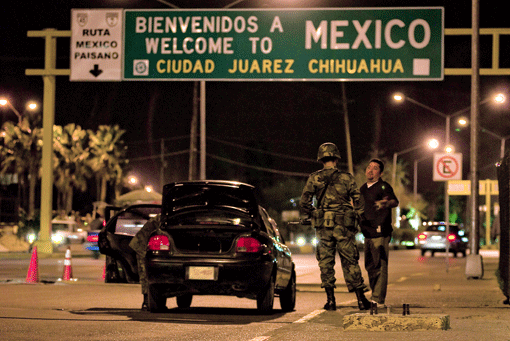Open any Mexican newspaper today and the drug carnage is front and center. In the last three years, narco-related murders surpassed 18,000, nearly 8,000 of these occurred in 2009 alone. The macabre nature of the violence ratcheted up too, featuring heads rolling across an Acapulco disco floor, a “stewmaker” admitting to dissolving some 300 bodies in acid and a dead man’s face stitched onto a soccer ball. The drug cartels openly taunt the authorities and each other, hanging narcomantas, or banners, over major thoroughfares boasting about their latest kills and threatening future violence if not left alone. Both the number of the attacks and their brazenness—particularly in states such as Sinaloa, Chihuahua and Michoacánare—are unprecedented.
 Yet crime-related violence in Mexico is not new. Mexico has always been a supplier of illegal markets in the United States, from alcohol in the prohibition era, heroin during World War II, marijuana throughout the 1960s, and in recent decades, a variety of drugs including cocaine, heroin, marijuana, and methamphetamines. As illicit businesses without access to formal contracts and courts, disputes and “mergers and acquisitions” have traditionally been settled with blood on the streets.
Yet crime-related violence in Mexico is not new. Mexico has always been a supplier of illegal markets in the United States, from alcohol in the prohibition era, heroin during World War II, marijuana throughout the 1960s, and in recent decades, a variety of drugs including cocaine, heroin, marijuana, and methamphetamines. As illicit businesses without access to formal contracts and courts, disputes and “mergers and acquisitions” have traditionally been settled with blood on the streets.
What has changed in recent decades is the scale of Mexico’s narcotics operations. U.S. demand has grown and diversified, and Mexico has increasingly become the primary supplier. While in 1990, 50 percent of U.S.-bound cocaine came through Mexico, today the figure is 90 percent.
It’s also important to note that the power base of the hemisphere’s drug trade has shifted from Colombia to Mexico. After four decades and billions of dollars, the U.S. “war on drugs” has pushed the epicenter of these illegal criminal networks closer to the U.S. border. The sheer amount of money that has accompanied this fundamental shift to transportation and smuggling just south of the U.S. border has upped the stakes. More resources have transformed the cartels into increasingly sophisticated organizations—with more professional enforcement arms.
Mexico’s democratization throughout the 1990s, which upset the long-standing collusion between some members of the ruling Partido Revolucionario Institucional (PRI) and particular favored drug traffickers, has been another contributing factor. The PRI’s eroding political monopoly brought in new actors, undermined old deals, and opened up the illicit sector to those previously kept out in the cold. The combination of more lucrative opportunities, heightened competition and changes to the political game created dramatic uncertainty in the market, escalating the bloodshed. Legacies of the PRI’s 70-year rule—in particular the political manipulation of law enforcement and judicial branches, which limited professionalization and enabled widespread corruption—further aggravated the situation, leaving the new government with only weak tools to counter increasingly aggressive crime networks…




